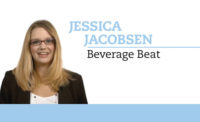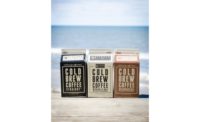Cold-brew processing offers opportunities for coffee, tea
Premium, plant-based innovations will help brands standout

STK Cold Brew released STK Fueled Creamers and Ready-to-Drink Coffee. The new beverages contain extra calories from protein, butter and MCT oil, the company says.
Image courtesy of Danone North America
William Shakespeare’s classic comedy “The Taming of the Shrew” still is part of the required reading list for various high school English students. Originally written in the 16th Century, the play has been adapted by many in the entertainment industry including the musical “Kiss Me, Kate” and the romantic comedy film “10 Things I Hate About You.” However, performance art is not the only classic that has been reinvented over time.
In the beverage market, developers are turning to emerging processing methods to stand out from competitors. One of those recent trends has been the proliferation of cold-brew processing for ready-to-drink (RTD) tea and coffee. In fact, a September 2019 Insights from New York-based Nielsen titled “How the Coffee Category Became a Hot Bed of Innovation for the U.S. Grocery Market,” reports that 158 new RTD coffees had launched in the past year. Of those, 89 were new cold-brew coffees, based on Nielsen Innovation Measurement data.
As more cold-brew beverages hit the U.S. market, experts detail what need state these products are serving.
“The moves in cold-brew tea seem more of a differentiation play,” says Roger Dilworth, senior analyst for New York-based Beverage Marketing Corporation (BMC). “It is a differentiation play in RTD coffee too, of course, but there are other considerations such as smoother taste and lower calories due to the lesser need for sweeteners and dairy.”
This differentiation can offer brands in the cold-brew space a chance to highlight on-trend product attributes, experts note.
“Cold-brew tea marketers would be best to emphasize any taste superiority of the cold-brew process, perhaps the reduction of bitterness in low-to-no sugar formulations,” Dilworth says.
Chicago-based Tiesta Tea utilized this approach when it took its functional bagged tea varietals and developed its RTD cold-brew flavors. The cold-brew tea lineup features five functional, leaf-brewed teas: Black Thai Tropical Cold Brew, its energizer varietal; Maui Mango Cold Brew, an immunity-boosting tea; Lean Green Machine, what it dubs as its slenderizer tea; Lavender Chamomile Cold Brew, a relaxation-supporting tea; and Blueberry Wild Child Cold Brew, what it calls its eternity tea.
Although cold-brew tea shows potential because of the reduction of sweeteners, Dilworth notes that cold-brew coffee has seen more benefits and is proliferating in the market.
“Cold-brew coffee seems to be on a more solid footing and will likely continue the same marketing playbook, including premium-priced, smoother tasting and lower calorie,” he says.
Holliston, Mass.-based Loco Coffee developed its functional cold-brew coffee line. Available in Loco Original, featuring coconut water, and Loco Maple, a coffee and maple water blend, Loco Coffees do not contain any added sugar.
Breaking from the pack
Although cold-brew beverages are niche in the overall RTD tea and coffee markets, experts note that brands in these spaces can still stand out from the other cold-brew products.
In a July 2019 blog post titled “Three ways cold brew coffee is set to evolve,” Jonny Forsyth, associate director for Mintel Food & Drink, advises brands to “sell ‘clean indulgence’ over pure indulgence,” “tap into the power of plants” and “craft a premium point of difference.”
In his description, Forsyth wrote that pure indulgence drives much of RTD coffee sales, but “much of cold brew's future growth will come from brands selling ‘clean indulgence,’ i.e., delivering iced coffee that delivers on taste without including artificial or other ‘nasty’ ingredients.”
Power of plants advises brands to use plant-based milks to differentiate flavor and natural attributes. “Early-adopter U.S. coffee shops are also experimenting with added botanical ingredients, i.e., cold brew blended with pandan leaf syrup,” Forsyth stated. “These botanical cold brews can translate into retail.”
Like many beverage categories, premiumization will help cold-brew brands differentiate themselves in a crowded market. “[T]here is more opportunity for craft cold brews to sell compelling provenance stories about single-origin beans,” Forsyth said. “Flash brew can also offer a ‘superior’ iced alternative to the numerous cold brews on-shelf.”
Brands in the cold-brew coffee space also are looking to add function to their offerings to appeal to consumers. For instance, Broomfield, Colo.-based STōK Cold Brew, a brand of Danone North America, released STōK Fueled Creamers and Ready-to-Drink Coffee. The new beverages are geared toward those who are looking to jump-start their day as the STōK Fueled line contains extra calories from protein, butter and MCT oil, the company says.
With cold-brew beverages continuing to hit the market, experts prognosticate the coffee arena will proliferate but remain undecided about cold-brew tea’s future.
“Cold-brew coffee will continue to steal share from regular RTD coffee for the same reasons enumerated earlier: premium positioning, low calories and smooth taste,” BMC’s Dilworth says. “Cold-brew tea is far from a sure thing and may or may not catch on in the mainstream.”
Looking for a reprint of this article?
From high-res PDFs to custom plaques, order your copy today!






